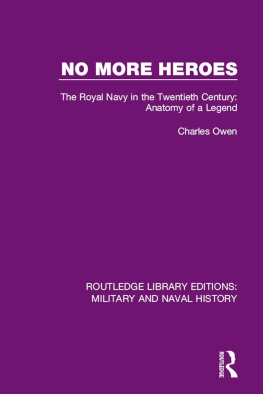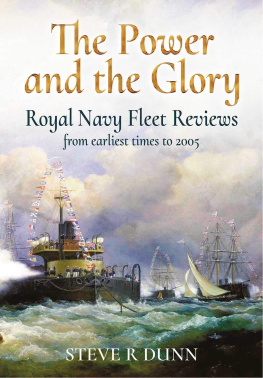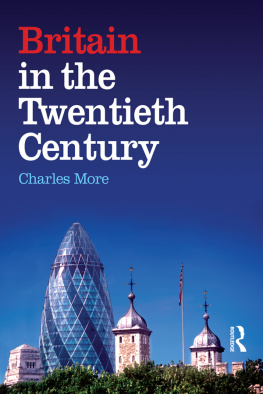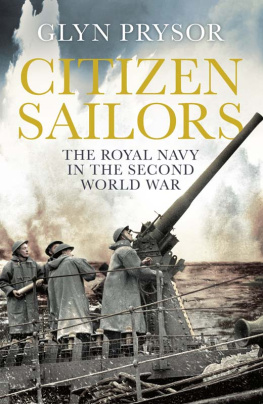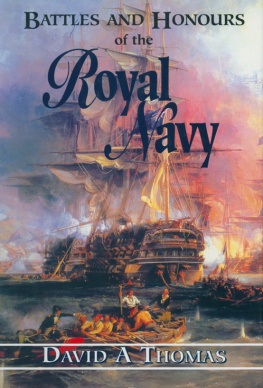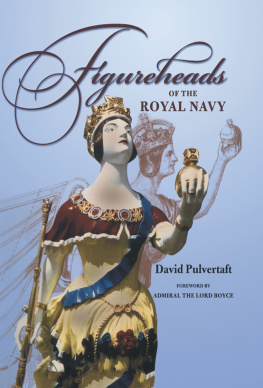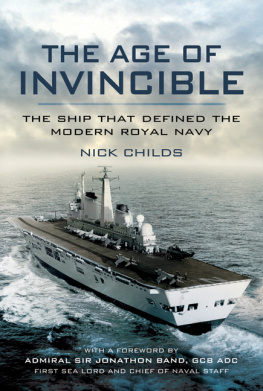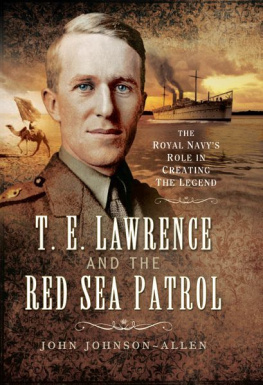ROUTLEDGE LIBRARY EDITIONS: MILITARY AND NAVAL HISTORY
Volume 19
NO MORE HEROES
NO MORE HEROES
The Royal Navy in the Twentieth Century: Anatomy of a Legend
CHARLES OWEN
First published in 1975
This edition first published in 2016
by Routledge
2 Park Square, Milton Park, Abingdon, Oxon OX14 4RN
and by Routledge
711 Third Avenue, New York, NY 10017
Routledge is an imprint of the Taylor & Francis Group, an informa business
1975 Charles Owen
All rights reserved. No part of this book may be reprinted or reproduced or utilised in any form or by any electronic, mechanical, or other means, now known or hereafter invented, including photocopying and recording, or in any information storage or retrieval system, without permission in writing from the publishers.
Trademark notice: Product or corporate names may be trademarks or registered trademarks, and are used only for identification and explanation without intent to infringe.
British Library Cataloguing in Publication Data
A catalogue record for this book is available from the British Library
ISBN: 978-1-138-90784-3 (Set)
ISBN: 978-1-315-67905-1 (Set) (ebk)
ISBN: 978-1-138-93563-1 (Volume 19) (hbk)
ISBN: 978-1-315-67724-8 (Volume 19) (ebk)
Publishers Note
The publisher has gone to great lengths to ensure the quality of this reprint but points out that some imperfections in the original copies may be apparent.
Disclaimer
The publisher has made every effort to trace copyright holders and would welcome correspondence from those they have been unable to trace.
NO MORE HEROES
The Royal Navy in the Twentieth Century: Anatomy of a Legend
CHARLES OWEN
First published in 1975
This book is copyright under the Berne Convention. All rights are reserved. Apart from any fair dealing for the purpose of private study, research, criticism or review, as permitted under the Copyright Act, 1956, no part of this publication may be reproduced, stored in a retrieval system, or transmitted, in any form or by any means, electronic, electrical, chemical, mechanical, optical, photocopying, recording or otherwise, without the prior permission of the copyright owner. Enquiries should be addressed to the publishers.
Charles Owen, 1975
SBN 0 04 359007 1
Printed in Great Britain
in 11 point Times Roman type
by Cox & Wyman Ltd,
London, Fakenham and Reading
For the Heroes who made the Legend
Among the several people who went out of their way to help me during the three years in which this book was being prepared, I wish to thank specially Admiral Sir Charles Madden and Captain . K. Oram, R.N., each of whom read, discussed and commented in detail upon virtually the entire text; Admiral Sir John Hamilton, Lt.-General Sir Ian Jacob, Major-General John Owen, Captain S. W. Roskiil, R.N., Professor Bryan Ranft, Douglas Matthews, . H. Hawkins, Benjamin Varela and Lieutenant Anthony Hallett, R.N., each of whom gave similar painstaking attention to substantial portions of the text; and Captain Donald Titford, R.N., Professor Michael Balfour and Michael Horniman for much practical assistance. I am grateful also to Oram, Hawkins, Horniman and Varela, among others, for invaluable advice and suggestions at the planning stage of the book. My wife, Felicity, besides helping and encouraging me constantly in all these ways, unearthed, fetched and often scrutinised for me much of my research material, including a non-stop flow of books from the London Library; and a good deal of basic research, particularly that covering the first and fourth decades of the century, was her work.
I interviewed numerous individuals fairly thoroughly, some in their official and others in their personal capacities. Among the former were the First Sea Lord, the Second Sea Lord, the Commanders-in-Chief Fleet and Naval Home, the Assistant Chief of Naval Staff for Policy, the Flag Officers Sea Training, Medway and Gibraltar, the President Admiralty Interview Board, the Directors General Ships, Personal Services, Manpower and Training, the Commanding Officers Britannia R.N. College, H.M.S. Excellent, H.M.S. Dryad, H.M.S. Dolphin, H.M.S. Daedalus and H.M.S. Raleigh, and the Directors Naval Warfare, Operations and Trade. I am grateful also to the Commander-in-Chief Netherlands Home Command, the Commandant Joint Warfare School, the , the Navys Director of Public Relations and the Manager of the Portsmouth branch of Gieves Limited for kindly making time available.
Those who were interviewed in their personal capacities included Admirals of the Fleet Sir Algernon Willis, Sir Varyl Begg and Sir Michael Pollock, Admirals Sir John Bush and Sir John Frewen, Vice Admiral Sir Peter Gretton, Captain Donald Macintyre, R.N., Professors Alec Rodger and Temple Patterson, Doctors V. Berghahn and Frank Hardie, Oliver Warner, Corelli Barnett, Hugh Hanning, John Harbron, Kenneth Lindsay, A. R. Smith and P. D. Nairne. The confidential records which I made after every interview, official and personal, form an important part of the books research material.
Other visited research sources, apart from libraries, were the National Maritime Museum, the Imperial War Museum, the Priddys Hard Weapons Museum (Gosport), the Submarine Museum (Gosport) and the Naval Gunnery School Photographic Museum (Portsmouth). Among the libraries which proved useful were those of the Admiralty, the University of Southampton, the Royal Naval Club (Portsmouth) and, above all else, the London Library. I am greatly obliged to the staffs of these institutions.
Also, I wish to thank for comments or advice Professor Arthur Marder, David Clark, Raymonde Horner, April Weiss and Angela Evans; and for help at various stages with research, organisation and typing Jillian Bond, Pat Chan, Nicky Clark, Faith Holland-Martin, Adrienne Salonika, Jackie Solon and Liz Theobald.
Unless otherwise stated, an individuals title, rank, surname and appointment, when mentioned in this book, are those applying on the particular occasion. Decorations and other awards, however, have usually been omitted. The term the Navy or Royal Navy refers to Britains Navy.
CHARLES OWEN
Contents
At sea in a modern destroyer. Views of Portsmouth and Dartmouth, and comparison with earlier days. Interview with a First Sea Lord. Short appraisal of Britains defence organisation and the Royal Navys place in NATO.
The flamboyant era. The great naval revolution, led by Fisher; the fracas with Beresford. Development of the big gun; the Dreadnought. The growing German menace and the armaments race (190012).
Preparations for war. First World War: its naval cornerstones, Jutland and the U-boat conflict. The roles of the giants, notably Lloyd George, Churchill, Fisher, Jellicoe, Beatty (191219).
The disarmament tangle. The rise in power and influence of the U.S. Navy, and its success in cutting the Royal Navy down to size. Other political and economic factors contributing to the Navys decline. The Invergordon nadir (191931).
The Chatfield era. Re-invigoration, rearmament, renaissance. Hitler and Mussolini; critical impact of the Italo-Ethiopian war. Hesitations about the role of aircraft and submarines (193139).



